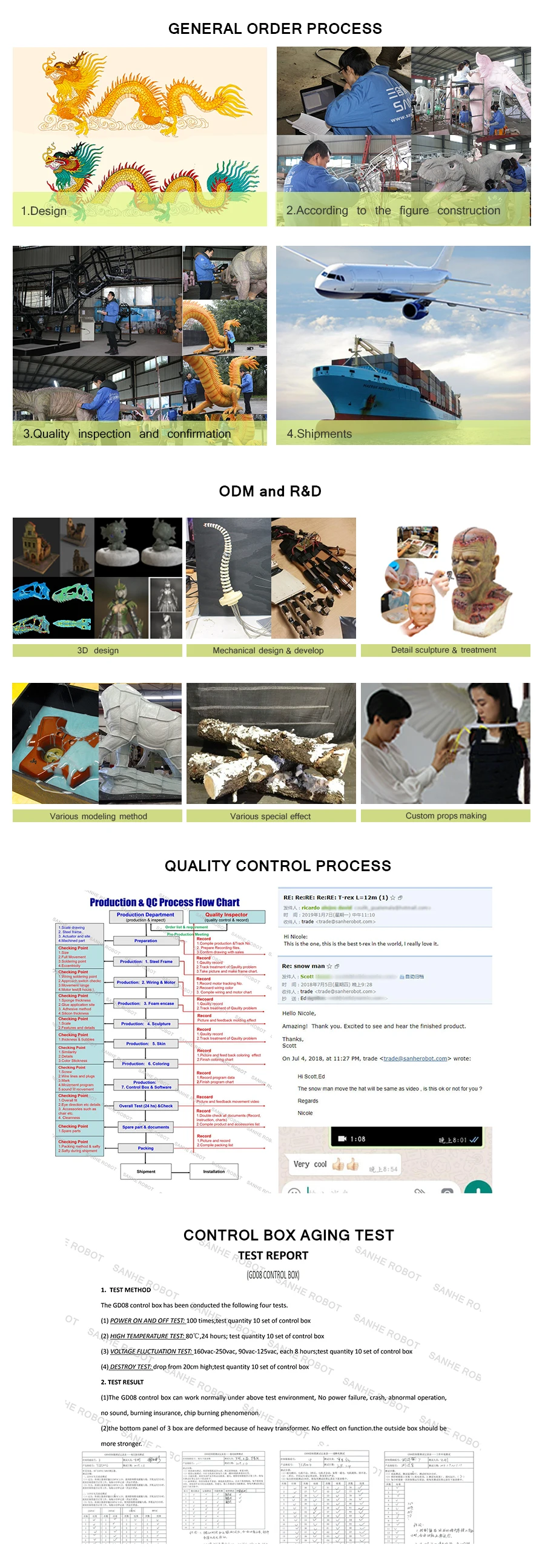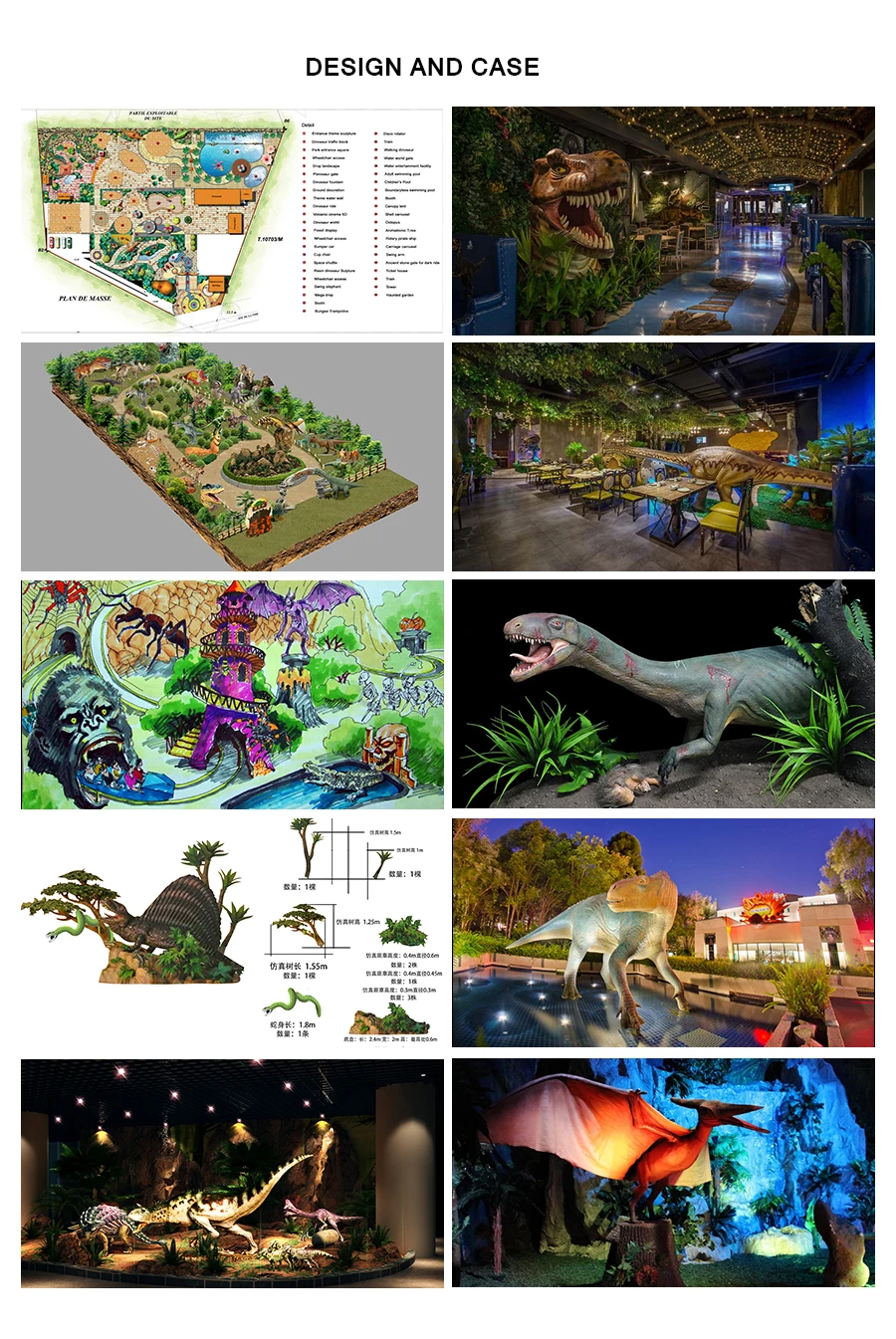Amusement park decorations animatronic live animal Varanus Poesty for sale


MORE INFORMATION
| Input | AC 110/220V ,50-60HZ |
| Plug | Euro plug / British Standard / SAA / C-UL / or depends on request |
| Control mode | Automatic / Infrared / remote / coin / Button / Voice / Touch / Temperature / shooting etc. |
| Waterproofing grade | IP66 |
| Working condition | Sunshine, rain, seaside, 0~50℃(32℉~82℉) |
| Optional function | Sound can be increased to 128 kinds Smoke,/ water. / bleed / smell / change color / change lights / LED screen etc interactive(Location tracking) / conversine(currently only Chinese) |
AFTER-SALE SERVICE
| Service | Need be cut for shipping,fwill provide a detailed installation manual. |
| Warranty | We provide 2 years warranty for all of our antrimatronic models, the warranty pieriod starts from freight arrives at destination port. Our warranty covers motor, reducer, control box, etc. |






 Animatronic animal life-size animal lifelike animal theme park live animals
Life size outdoor playground animal statue Professional vivid life size custom animal statues Theme park animatronic animated Lifelike robotic animatronic Animal park animatronic Life size realistic animal statue hot sale waterproof life size resin animals amusement park animatronic life size artificial animal animated animatronic life size animal decoration indoor playground animatronic life size
Monitor lizards are large lizards in the genus Varanus. They are native to Africa, Asia, and Oceania, and one species is also found in the Americas as an invasive species. About 80 species are recognized.
Monitor lizards have long necks, powerful tails and claws, and well-developed limbs. The adult length of extant species ranges from 20 cm (7.9 in) in some species, to over 3 m (10 ft) in the case of the Komodo dragon, though the extinct varanid known as megalania (Varanus priscus) may have been capable of reaching lengths more than 7 m (23 ft). Most monitor species are terrestrial, but arboreal and semiaquatic monitors are also known. While most monitor lizards are carnivorous, eating eggs, smaller reptiles, fish, birds, insects, and small mammals, some also eat fruit and vegetation, depending on where they live
The various species cover a vast area, occurring through Africa, the Indian subcontinent, to China, the Ryukyu Islands in southern Japan, south to Southeast Asia to Thailand, Malaysia, Brunei, Indonesia, the Philippines, New Guinea, Australia, and islands of the Indian Ocean and the South China Sea. The West African Nile monitor (Varanus stellatus) is now found in South Florida[3] and in Singapore. Monitor lizards also occurred in Europe in the Neogene, with the last known remains dating to the Middle Pleistocene
Most monitor lizards are almost entirely carnivorous,[5] consuming prey as varied as insects, crustaceans, arachnids, myriapods, mollusks, fish, amphibians, reptiles, birds, and mammals. Most species feed on invertebrates as juveniles and shift to feeding on vertebrates as adults. Deer make up about 50% of the diet of adults of the largest species, Varanus komodoensis.[6] In contrast, three arboreal species from the Philippines, Varanus bitatawa, Varanus mabitang, and Varanus olivaceus, are primarily fruit eaters.[7][8][9] Although normally solitary, groups as large as 25 individual monitor lizards are common in ecosystems that have limited water resources.
Animatronic animal life-size animal lifelike animal theme park live animals
Life size outdoor playground animal statue Professional vivid life size custom animal statues Theme park animatronic animated Lifelike robotic animatronic Animal park animatronic Life size realistic animal statue hot sale waterproof life size resin animals amusement park animatronic life size artificial animal animated animatronic life size animal decoration indoor playground animatronic life size
Monitor lizards are large lizards in the genus Varanus. They are native to Africa, Asia, and Oceania, and one species is also found in the Americas as an invasive species. About 80 species are recognized.
Monitor lizards have long necks, powerful tails and claws, and well-developed limbs. The adult length of extant species ranges from 20 cm (7.9 in) in some species, to over 3 m (10 ft) in the case of the Komodo dragon, though the extinct varanid known as megalania (Varanus priscus) may have been capable of reaching lengths more than 7 m (23 ft). Most monitor species are terrestrial, but arboreal and semiaquatic monitors are also known. While most monitor lizards are carnivorous, eating eggs, smaller reptiles, fish, birds, insects, and small mammals, some also eat fruit and vegetation, depending on where they live
The various species cover a vast area, occurring through Africa, the Indian subcontinent, to China, the Ryukyu Islands in southern Japan, south to Southeast Asia to Thailand, Malaysia, Brunei, Indonesia, the Philippines, New Guinea, Australia, and islands of the Indian Ocean and the South China Sea. The West African Nile monitor (Varanus stellatus) is now found in South Florida[3] and in Singapore. Monitor lizards also occurred in Europe in the Neogene, with the last known remains dating to the Middle Pleistocene
Most monitor lizards are almost entirely carnivorous,[5] consuming prey as varied as insects, crustaceans, arachnids, myriapods, mollusks, fish, amphibians, reptiles, birds, and mammals. Most species feed on invertebrates as juveniles and shift to feeding on vertebrates as adults. Deer make up about 50% of the diet of adults of the largest species, Varanus komodoensis.[6] In contrast, three arboreal species from the Philippines, Varanus bitatawa, Varanus mabitang, and Varanus olivaceus, are primarily fruit eaters.[7][8][9] Although normally solitary, groups as large as 25 individual monitor lizards are common in ecosystems that have limited water resources.

+86-813-2104677

info@sanherobot.com

+86-13990010824

No.13 Huixin Road, Yantan Town, Yantan District, Zigong City, Sichuan Province, China